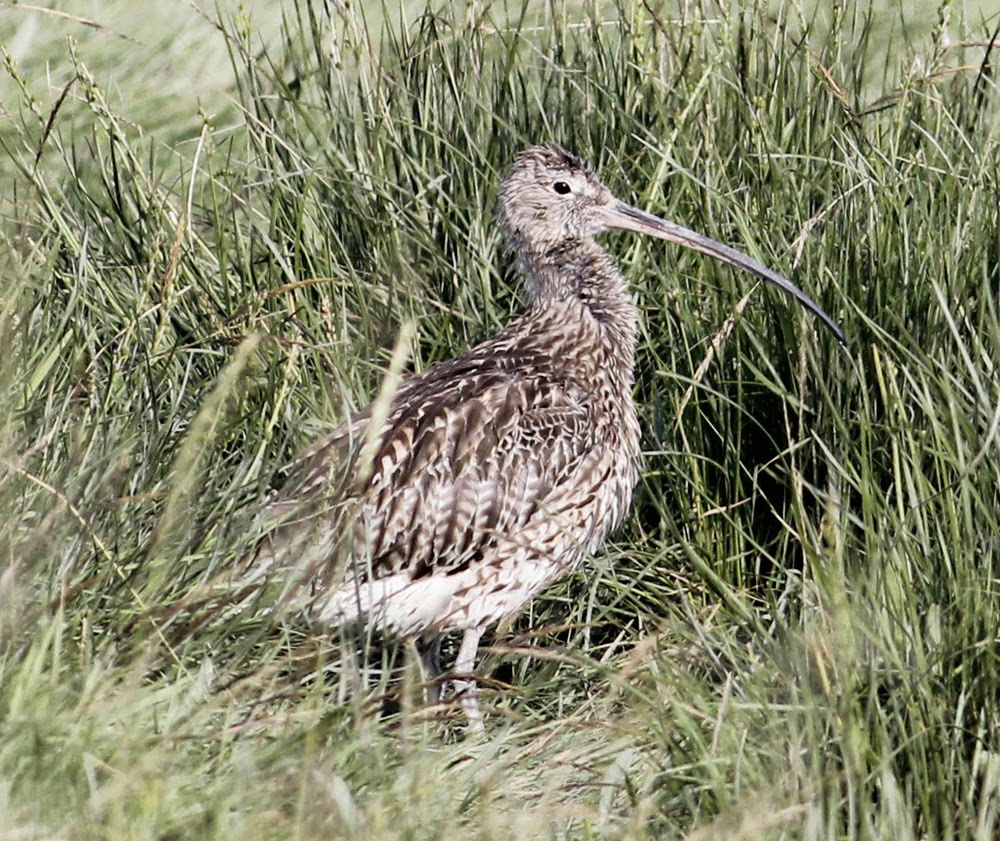The run of early morning starts dictated a lie in on Friday. That’s not to say there isn’t birding to do, just that it started later to take in the 1115 tide at Knott End. So there isn’t a great deal of news in today’s post but there are at last on Another Bird Blog, pictures of the shy Golden Plover.
By late July there should be signs of returning waders and terns using the beach for feeding and resting, and although there weren’t huge numbers today, the variety is improving.
The tide brought in end of summer terns, 20 Sandwich Terns to be exact, the terns all settling on the beach after a couple of noisy fly-arounds.
Sandwich Terns
After a good number flew up river or towards Pilling it still left 160 Oystercatchers on the beach as the 8.4 metre tide failed to cover the flat sands. I added 3 Redshank, 2 Dunlin, 1 Ringed Plover and 1 Whimbrel to the list although I could hear both Ringed Plovers and Dunlin in flight somewhere.
I turned my attention to a juvenile Golden Plover which called as it flew onto the beach from the west. I’ve always found our UK Golden Plovers extremely difficult to approach, partly due to the species innate wariness of man. Amazingly, and to our shame as a civilised nation the very fine-looking Golden Plover is a “quarry” species, i.e. it can be legally shot.
It really is time that conservation organisations campaigned to have the Golden Plover removed from the list of quarry species when it continues to decline as a breeding species. And whilst they are thinking about the Golden Plover it would be useful to consider other declining species like Snipe and Woodcock.
I kept still and quiet, clicking away and holding my breath as the plover relaxed and fed before the incoming tide sent it flying off west. I asked myself what justification there could be for shooting such a beautiful bird? I have a good idea what Knott End Annie would have thought about it.
Golden Plover
Golden Plover
Golden Plover
Annie's Log - Knott End
The River Wyre at Knott End
Up river I found a single Eider, a Grey Heron, a Pied Wagtail and several Linnets and Goldfinches.
There will be more news and pictures from Another Bird Blog soon but no guarantee of photos of Golden Plover.
Linking today to Eileen's Saturday Blog and Anni's Blog.
Linking today to Eileen's Saturday Blog and Anni's Blog.












































































